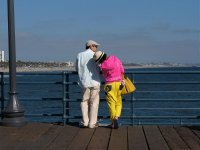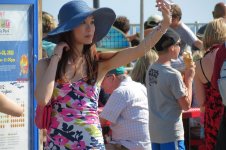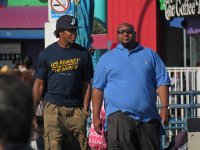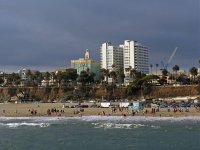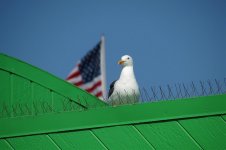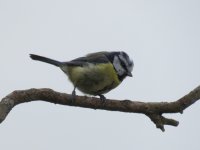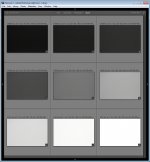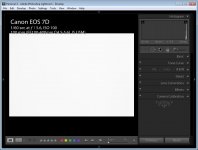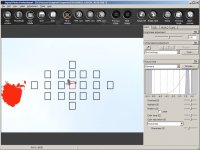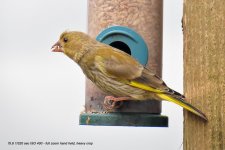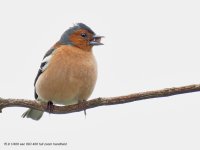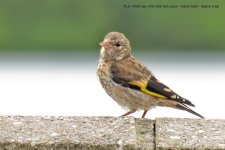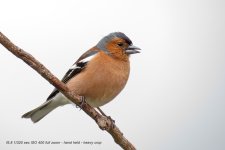You'll have to find out which meter position is correct for the SX40, bearing in mind it has a smaller sensor, possibly different meter calibration and only shoots to JPEG. +3 works well for all my DSLRs when shooting RAW. Even at +3, raw allows me a little leeway for highlight recovery if I'm lazy or get my metering wrong.
I would suspect that +3 might be too much for the SX40, but since I don't have one I don't know the limit for that camera. Owners will have to perform their own tests to see at which point clipping starts to appear. The answer may also be influenced on camera settings for things like picture style (if the camera has that), and settings for contrast, saturation and sharpening. The more aggressive/punchy the settings the higher the chance you'll have to dial it back a little.
As well as using the histogram, if the camera has a "blinkies" feature to show highlight alerts then turn that on and you can keep turning up the exposure until the important highlights start to clip. When you see that happen then decrease exposure by 1/3 and you should be safe.
The first attached photo shows how middle grey (meter at 0) looks from my 7D compared to exposures at between -4 and +4 stops from that baseline, when imported into Lightroom. The second photo shows the resulting histogram for the +3 exposure, well towards the right hand side of the histogram, but just short of clipping point. The idea would be to see which metering value achieves a similar histogram for the SX40 when aimed at a bright sky or white sheet of paper.
EDIT : Sorry, missed a bit. A blue sky is not the same as a grey sky for the purposes of metering. With a grey sky the clouds act as a giant softbox, turning the whole sky into your light source. As such, the sky will usually be the brightest part of the scene and it would be correct to nudge the brightest parts of the sky well over to the right of the histogram. With a blue sky it would be reasonable to assume that you also have bright sunshine on your subject. That means that the whole sky is not the main source of light, but rather the sun, which you do not include in the frame. A white bird would appear much brighter than a blue sky when front lit by the sun, so metering the blue sky at +3 or close to it would probably be very foolish. You also don't really want to turn a beautiful blue sky into something approaching burnt out white. It is a bit of a judgement call, depending on the angle of the sun, how hazy the sky and the tone of the birds and one size does not fit all for blue skies.
Even when faced with grey skies, they are not necessarily uniformly grey, and sometimes you can have visible sunshine behind you and dark grey skies ahead, in which case you are no longer in a backlit situation. You really have to read the scene and the light and work out what is going on and how to handle it. The bottom line is that you want to expose brightly, so as to capture plenty of image data, but not go so far that you blow out important areas of the subject and scene. The first thing to do is to figure out which is (likely to be) brighter - the subject or the background - and then figure out how to set the exposure for that scenario. In the world of digital photography, expose for the highlights and develop for the shadows.
EDIT 2 : I've added a third image, which is just a demo shot taken this afternoon to show the results of metering at +3 from a bright grey sky with a flying subject in the frame. The spot meter was pretty much where the aircraft is in the shot, although I metered at that point in advance of the aircraft's arrival. I knew I did not want to shoot the aircraft by the time it got to the really bright bit of the sky or I would have had to dial back my exposure to hold the sky down. However, the inclusion of the brighter part of the sky shows how close I was to clipping, without actually going quite that far in the important part of the frame. Of course it's a completely rubbish photo, but it demonstrates the fine control you can have over the exposure if you have the time to get dialed in before your subject turns up. I often find this a far easier way to operate than to leave the results open to the variables of autoexposure and estimating how much EC is required. It also means that I know where I stand prior to shutter release rather than firing off a shot, chimping, adjusting and firing a second shot, by which time I might have missed the opportunity altogether.





